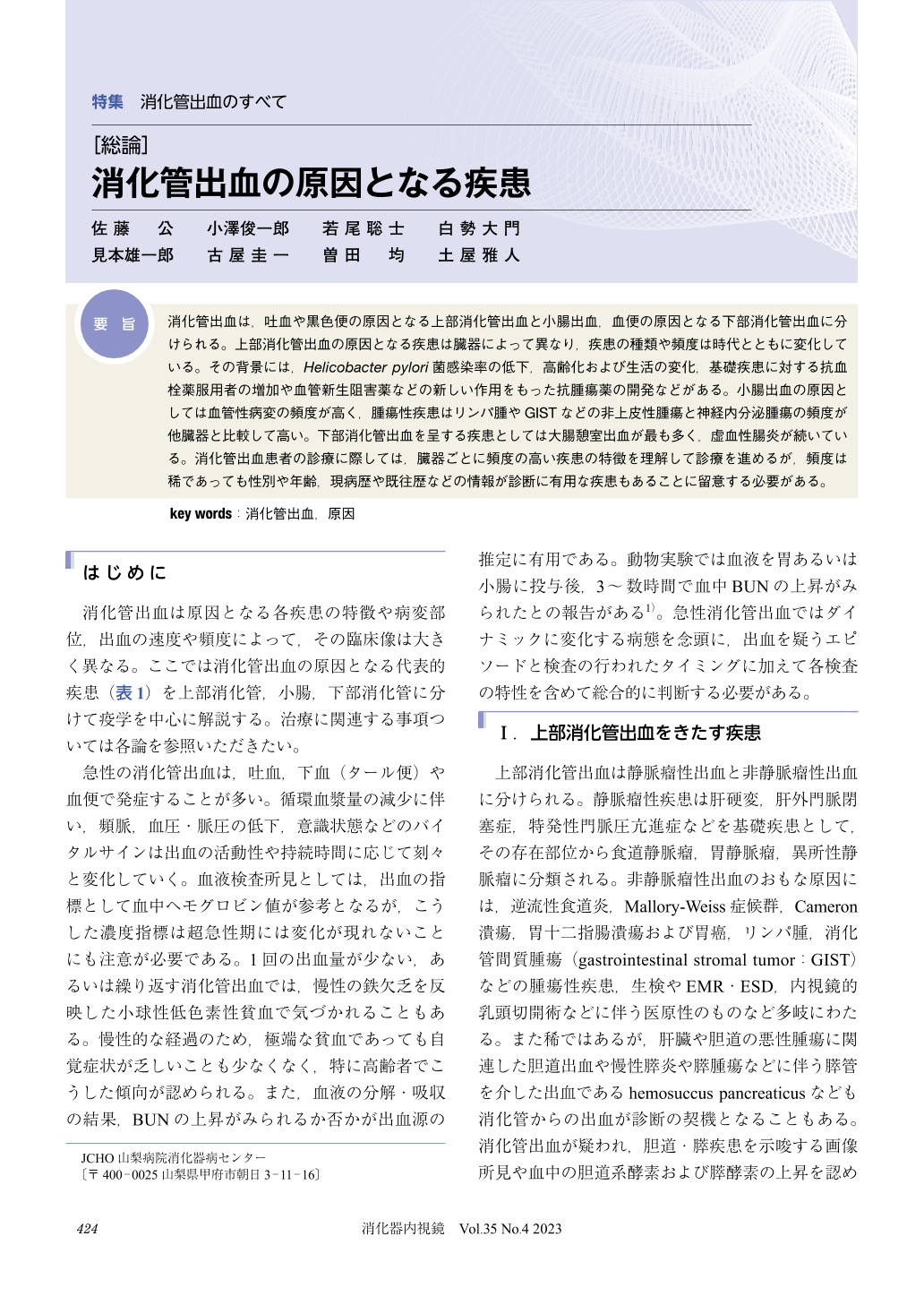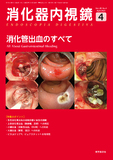Japanese
English
- 有料閲覧
- Abstract 文献概要
- 1ページ目 Look Inside
- 参考文献 Reference
要旨
消化管出血は,吐血や黒色便の原因となる上部消化管出血と小腸出血,血便の原因となる下部消化管出血に分けられる。上部消化管出血の原因となる疾患は臓器によって異なり,疾患の種類や頻度は時代とともに変化している。その背景には,Helicobacter pylori菌感染率の低下,高齢化および生活の変化,基礎疾患に対する抗血栓薬服用者の増加や血管新生阻害薬などの新しい作用をもった抗腫瘍薬の開発などがある。小腸出血の原因としては血管性病変の頻度が高く,腫瘍性疾患はリンパ腫やGISTなどの非上皮性腫瘍と神経内分泌腫瘍の頻度が他臓器と比較して高い。下部消化管出血を呈する疾患としては大腸憩室出血が最も多く,虚血性腸炎が続いている。消化管出血患者の診療に際しては,臓器ごとに頻度の高い疾患の特徴を理解して診療を進めるが,頻度は稀であっても性別や年齢,現病歴や既往歴などの情報が診断に有用な疾患もあることに留意する必要がある。
Gastrointestinal bleeding is classified into upper gastrointestinal bleeding that causes hematemesis and tarry stool, small intestinal bleeding, and lower gastrointestinal bleeding that causes hematochezia. Diseases causing gastrointestinal bleeding have characteristics for each organ, and the diseases and their frequency change over time. The number of gastroduodenal ulcer patients with upper gastrointestinal hemorrhage is decreasing along with the decline of Helicobacter pylori infection; however, the ratio of inpatients to all patients is increasing. In the background, there is an increase in the number of elderly patients taking antithrombotic drugs, and the development of anti-tumor drugs with new actions such as angiogenesis inhibitors. Vascular lesions are the most common causes of small intestinal bleeding, and lymphoma, GIST, and neuroendocrine tumors are more frequent in the small intestine compare with other organs. Diverticular bleeding is the most common cause of lower gastrointestinal bleeding. The causes of lower gastrointestinal bleeding are reported to be diverticular bleeding in 63.6% and ischemic enteritis in 9.1% of patients in Japan. The cumulative incidence of bleeding from diverticulosis was approximately 2% at 5 years and 10% at 10 years. In the medical care of patients with gastrointestinal bleeding, it is necessary to understand the characteristics of frequent diseases in each organ.

© tokyo-igakusha.co.jp. All right reserved.


